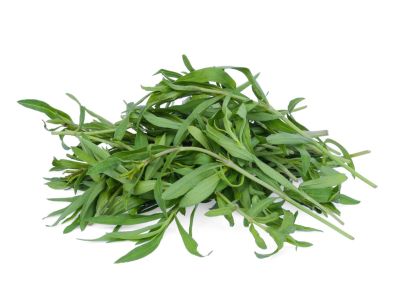Although not classified as a different species, French tarragon herbs should not be confused with Russian tarragon, which has a less intense flavor. This tarragon herb is more likely to be encountered by the home gardener when propagated by seed, while French tarragon herbs are entirely propagated via vegetation. True French tarragon may also be found under the more obscure names of ‘Dragon Sagewort,’ ‘Estragon,’ or ‘German Tarragon.’
How to Grow French Tarragon
Growing French tarragon plants will flourish when planted in dry, well-aerated soils with a neutral pH of 6.5 to 7.5, although the herbs will do well in a slightly more acidic medium as well. Prior to planting French tarragon herbs, prepare the soil by mixing in 1 to 2 inches (2.5-5 cm.) of well-composted organics or ½ tablespoon (7 ml.) of an all-purpose fertilizer (16-16-8) per square foot (929 sq. cm.). Adding organic matter not only feeds the French tarragon plants but will also aid in aerating the soil and improve water drainage. Work the organic nutrients or fertilizer into the top 6 to 8 inches (15-20 cm.) of the soil. As mentioned, French tarragon is propagated vegetatively via stem cuttings or root division. The reason for this is that French tarragon herbs rarely flower and thus, have limited seed production. When propagating from root division, French tarragon plant care is required lest you damage the delicate roots. Use a knife instead of a hoe or shovel to gently separate roots and collect the new herb plant. Divide the herb in spring just as the new shoots are breaking ground. You should be able to collect three to five new transplants from the parent French tarragon plant. Propagation may also occur by taking cuttings from young stems early in the morning. Cut a 4 to 8 inch (10-20 cm.) amount of stem from just below a node and then remove the lower one-third of the leaves. Dip the cut end into rooting hormone and then plant in warm, moist potting soil. Keep the new baby herb consistently misted. Once the roots form on your new tarragon plant, it may be transplanted into the garden in the spring after the danger of frost has passed. Plant the new French tarragon plants 24 inches (61 cm.) apart. Either way you are propagating French tarragon, the plants prefer full sun exposure and warm but not hot temps. Temperatures over 90 degrees F. (32 C.) may require coverage or partial shading of the herb. French tarragon plants may be grown as either annuals or perennials, depending on your climate and are winter hardy to USDA zone 4. If you are growing French tarragon in a chillier clime, cover the plant with a light mulch during the winter months.
French Tarragon Plant Care
Growing French tarragon plants don’t tolerate wet or overly saturated soil conditions, so watch out for overwatering or situating in locations known for standing water. Water about once a week and allow the soil to dry between watering. Mulch around the base of the plant to keep the moisture near the surface of your herb and to discourage root rot, otherwise French tarragon is fairly disease and pest resistant. There is very little need to fertilize French tarragon, and as with most herbs, French tarragon’s flavor only intensifies in nutrient deficient soils. Just fertilize at the time of planting and then let it go. French tarragon may be pruned and pinched to maintain its shape. Divide the plants in the spring to retain the health of the herb and replant every two to three years. Once established, prepare to enjoy French tarragon fresh or dry in everything from fish recipes to egg dishes, and butter compounds or even to flavor vinegars. Bon Appétit!
